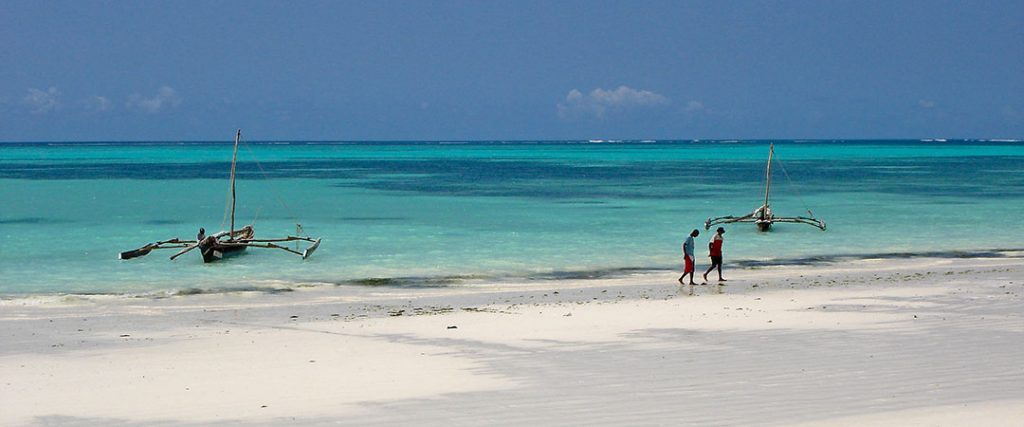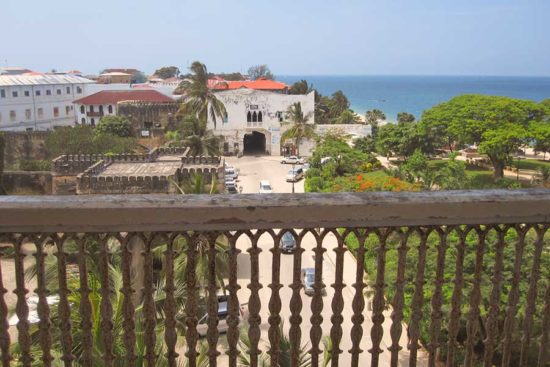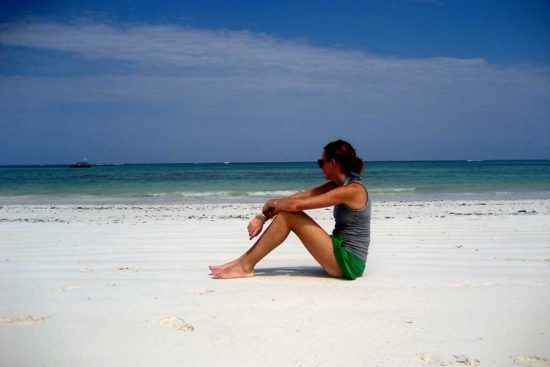Zanzibar Island with one of the best beaches in the world is the perfect place to relax, swim or soak up in the sun and enjoy amazing scenery of the Indian Ocean

Zanzibar Island also known as Spice Island is beautiful bursting place with many culture and historical sites. The white sand beaches on this island make it a fabulous place to relax and explore the waters.
Zanzibar is the semi-autonomous part of Tanzania and is composed of the Zanzibar Archipelago in the Indian Ocean. Located about 25 to 50 kilometers off the coast of Tanzania, it consists of many small islands and two large ones i.e. Unguja island (referred to informally as Zanzibar) and Pemba island.
In the early years – 16th century, the Portuguese invasion and control of the Swahili coast ended the golden age of the archipelago. Currently the old town houses and winding streets of stone town remain unchanged and visitors can tour through the sultan’s palace, the House of Wonders, the Portuguese fort and gardens, the merchants’ houses and the Turkish baths of the old city. Day tours are available for tourists willing to observe the cultivation of cloves, vanilla, nutmeg, cinnamon and other spices that have made the island famous.
The coastline of Zanzibar offers some of the best beaches in the world with white sand and surfs depending on what side of the island you are on. Zanzibar beaches are a true African paradise with a number of fishing villages with people living simple lives since the old times. There are over 25 beaches here and some are very peaceful, remote making it a perfect place for a get-away from the city noise.
Waves on the eastern cost break over coral reeds and sand bars offshore, with the low tides revealing small starfish, small minnows and anemones. The northern side, ocean swimming is less susceptible to tides, with smooth beaches & white sand for dazzling days in the sun.
ZANZIBAR WHITE SANDS & ISLETS
At the northern tip of the island is Nungwi, approached by a road lined by banana palms, mangroves and coconut trees. This is the dhow building capital of Zanzibar Island, so it is a good place to see traditional craftsmen at work.
On the west coast of Zanzibar, Mangapwani beach is worth a visit and to the east are the beaches of Matemwe, Pwani Mchangani, Kiwengwa, Uroa, Bwejuu and Jambiani, all with stretches of beautiful white sands.
Pemba is Zanzibar’s sister island. Despite many years of isolation from the outside world, Pemba is receiving a small but growing number of foreign visitors. The infrastructure much less than on Unguja, and there are far fewer tourists, but this is seen as a plus by many! Beautiful beaches, natural forests and outstanding diving are just some of the attractions on offer. Misali Island off Pemba’s east coast, is idyllic and excellent for diving.
Mafia, another island in the sun and no relative of the mob, is actually governed by mainland Tanzania but is not far from the Zanzibar archipelago.
Zanzibar also boasts several small offshore islands which are ideal for a day-trip. Prison (or Changu) island is the most popular with tourists because it is only a short trip from Stone Town. Originally, it was used by Arabs to detain recalcitrant slaves, and then a jail was built by the British, but it was never actually used. Visitors to Zanzibar will notice a large population of ancient Aldabra tortoises. Other islets near to Stone Town are Chapwani, Chumbe and Bawe.


STONE TOWN
It may not have a particularly romantic name but Stone Town is the old city and cultural heart of Zanzibar, little changed in the last 200 years. It is a place of winding alleys, bustling bazaars, mosques and grand Arab houses whose original owners vied with each other over the extravagance of their dwellings. This one-upmanship is particularly reflected in the brass-studded, carved, wooden doors – there are more than 500 different examples of this handiwork. You can spend many idle hours and days just wandering through the fascinating labyrinth of narrow streets and alleyways.
Most of the houses that can be seen today were built in the 19th century when Zanzibar was one of the most important trading centers in the Indian Ocean region. The coraline rock of Zanzibar was a good building material, but it is also easily eroded. This is evident by the large number of houses that are in a bad state of repair.
Several buildings have already been renovated and the Stone Town Conservation Authority has been established to co-ordinate the restoration of the town to its original magnificence. Pictured opposite is a ‘before and after’ look at the restoration work done on the Old Dispensary. As a result of sensible policy, nearly all of the major hotels built in Stone Town are housed in renovated buildings.
Stone Town is very much a real community, where real people live and work. It is not a museum piece or theme park created for tourists, and sensitivity should be shown to the local people. If you want to learn more about Stone Town, there are various ways to do it. You can either wander through the narrow streets by yourself armed with a map, or you can embark on a tour with one of the local tour operators.
As one of the world’s most cosmopolitan destinations, Zanzibar is blessed with a rich history of music, religious practice and culture that has evolved over the centuries to provide us, and the world, with a unique and varied selection of musical and cultural diversity.

